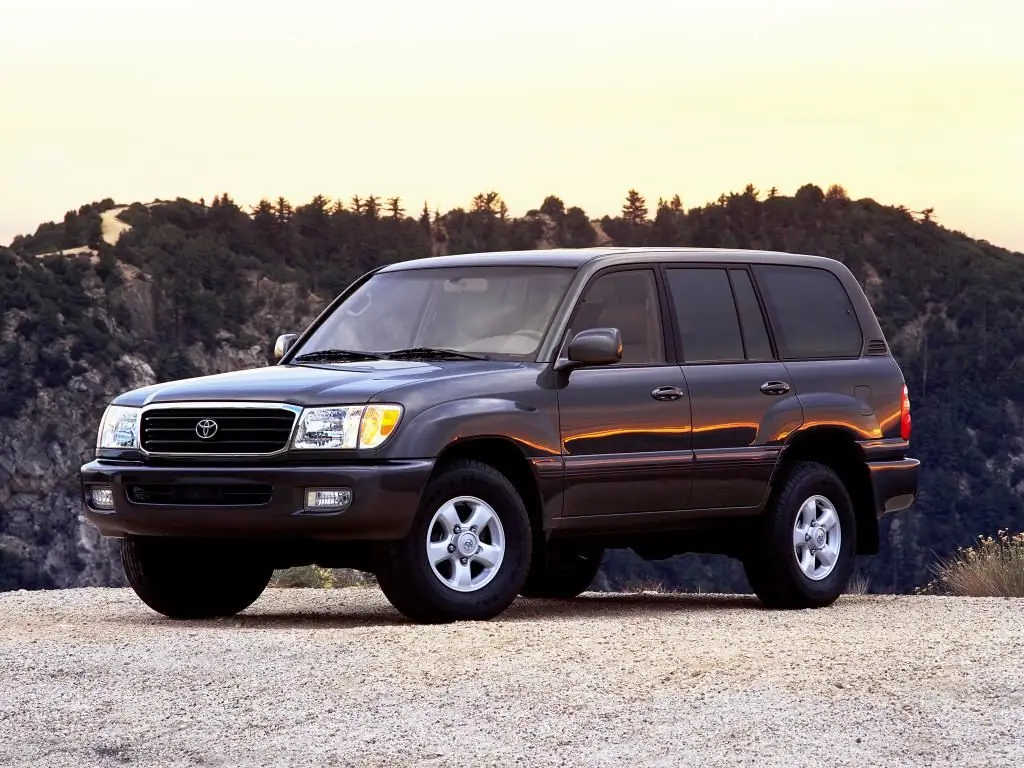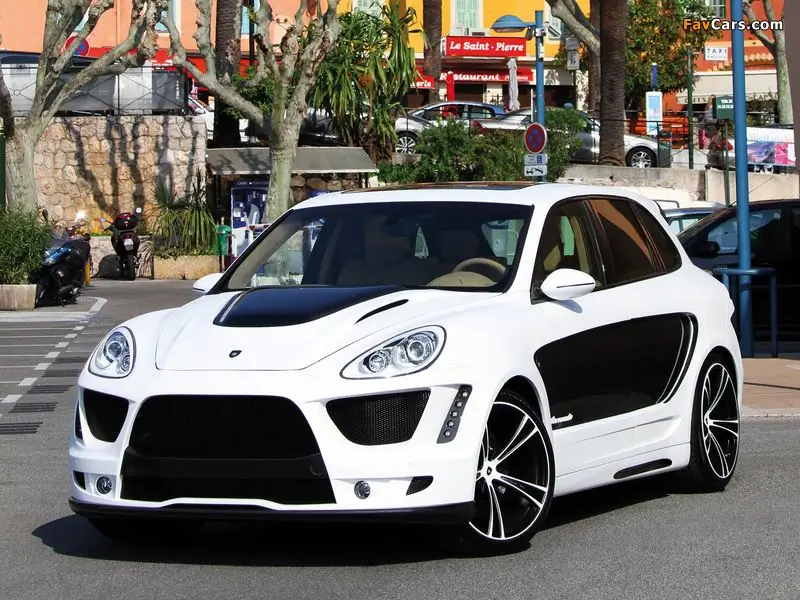2025 Author: Erin Ralphs | [email protected]. Last modified: 2025-01-22 21:14:14
Most of the roads in the Soviet Union, especially those outside the city, always left much to be desired. This was especially acutely felt in the post-war years, when the state needed to restore agriculture and infrastructure. The country needed cars that could easily move over rough terrain and off-road conditions. Therefore, in 1946, Grigory Moiseevich Wasserman, who was the leading designer at the Gorky Automobile Plant, began working on a new SUV.
The birth of a "worker"
The first model of the car, which the workers of the plant called "hard worker", with the official marking GAZ-69, rolled off the assembly line in 1947. In 1948, 3 more cars were assembled at the plant. At that time, such a speed of the appearance of the car, from the design to the first prototypes, was considered simply phenomenal. But there was an explanation for that. The fact is that in its design ready-made components and mechanisms were used, which were successfully used on mass-produced machines.

For example, the engine, the volume of which was 2.1 liters, went to the "sixty-ninth" from the famous GAZ-M-20 ("Victory"). It has been slightly modified, with the result thatpower increased to 55 liters. s.
The transmission of the new SUV was also borrowed from Pobeda.
A novelty in the car was the appearance of a device that provides preheating. The salon was equipped with a heater, and warm air was provided for the windshield. All these innovations made it possible to operate the GAZ-69 at any time of the year and in any weather.
Appearance of GAZ-69A
The first tests under the supervision of the state commission took place in September 1951. In the same year, the first sample of the GAZ-69A was assembled, which had noticeable differences from the usual "sixty-ninth". First of all, they concerned the car body.
GAZ-69 had two doors. There were two seats in front. Three benches were installed at the rear to carry six people. Such an ascetic arrangement of the body was explained by the fact that this car was intended primarily for the army. Therefore, convenience was sacrificed for practicality.

GAZ-69A had a wider purpose, it was planned to be used for the needs of the national economy. Therefore, two more doors were added to the existing doors, and a soft sofa, which could fit three people, replaced the wooden benches. In addition to the fact that the body of the GAZ-69A received new elements, the changes also affected the fuel system. In the "sixty-ninth" there were two fuel tanks with different volumes: one 47, the other 28 liters. In GAZ-69A they were replaced with one tank of 60 liters.
Permeability is the main trump card
However, the added amenities did not makeGAZ-69A is a comfortable city car. He still remained a hard worker without frills. Its cross-country ability and unpretentiousness could become the standard for any off-road vehicles of the world of that time.

It was the impeccable cross-country ability of the "sixty-ninth" family that became their hallmark. The short base, low weight, all-wheel drive system, excellent ground clearance under the bridges of the car made it possible for the SUV not to be afraid of difficult road obstacles.
Such qualities of the car, as well as its low cost, provided the car with demand not only in the USSR, but also abroad. About 50 foreign countries purchased a Soviet SUV for their own needs.
Off-road equipment
Despite the fact that the interior of the GAZ-69A car was considered quite spacious, it was not very convenient to get into it because of the narrow doors.
You will not find comfortable excesses in the cabin either. Everything is just the essentials.

The front panel of the GAZ-69A (photo above) contained a minimum of devices:
- speedometer;
- indicator informing the driver about the amount of remaining fuel in the tank;
- ammeter showing battery charge level.
Heating system for winter and sun visor for summer - that's all the amenities offered by the manufacturer for comfortable operation.
The trunk lid was hinged. If it was in the open position, this lengthened the floor of the luggage compartment and gavethe ability to transport oversized cargo.
The leatherette-covered chairs were soft, but slippery, and it was problematic to sit on them on uneven roads. GAZ-69A had a spring suspension design, which caused the car to spring on bumps, and with it all those who were in the cabin. Actually, for such jumping ability, the car was nicknamed the “goat”.
The windshield was cleaned from external contaminants by a wiper, the trapezium of which was installed above the glass.

To protect the interior of the car from the weather, a coating was provided, which was an awning made of dense waterproof material (tarpaulin). The GAZ-69A canopy was stretched over the body metal frame and, with the help of loops “soldered” into the edges of the cover (grommets), was firmly fixed at the base.
Transmission
On the GAZ-69A, the power unit and two axles were fixed on a frame structure. The frame had a rectangular closed shape with six transverse reinforcements.
Both axles of the car were driving. The center differential was not provided in the design.
As mentioned above, the engine on the SUV was installed from the Pobeda car and was marked GAZ-20. Its volume was a little over two liters and the power was 55 hp. With. The four-cylinder unit was running on low-octane gasoline (A-66).

The mechanical gearbox installed on the GAZ-69A had three gears for forward movement and one for reverse.
Power steeringthe steering wheel was not provided for in the design of the car, and, in fact, there was no particular need for it, the steering wheel turned even when the car was stationary without much effort.
Specifications
GAZ-69A had the following specifications:
- The overall dimensions of the car (including the canvas cover) were 3 m 85 cm x 1 m 75 cm x 1 m 92 cm (length, width, height respectively);
- interwheel track - 1 m 44 cm;
- distance from the roadway to the bridge - 21 cm;
- declared fuel consumption - 14 liters per 100 km, the actual consumption varies from 16 to 20 liters, depending on the load;
- the maximum possible speed is 90 km/h;
- The weight of the car without equipment is 1415 kg, the weight of the equipped car is 1535 kg.
The contribution of modern craftsmen to the design of the car
Despite the fact that the GAZ-69A last rolled off the assembly line in 1973, it still comes across on Russian roads. True, it is still difficult to see him in the form in which he left the factory gates. The craving of lovers of rare cars to bring modern notes to their appearance is very high. Tuning GAZ-69A is not limited to changes in the appearance of the car. Its chassis and even the engine are being changed.
Improvements to the running gear of the SUV
Since the GAZ-69A is an SUV, the owners of this rare car are first of all trying to improve its already good cross-country ability.
To do this, lift the car. Moreover, it is carried out not onlyon the body, when it is lifted above the frame using special spacers, but also on the suspension, when the off-road clearance increases.

Lifting on the body is done for one purpose - to make it possible to install larger diameter wheels on the GAZ-69A.
Tuning the appearance of the Soviet SUV
To give the "goat" a more attractive look, and at the same time improve its qualities, power bumpers of increased strength are installed on it. The design of the car is complemented by a winch, the presence of which sometimes helps out on impassable roads.

The exhaust pipe nozzle is installed above the level of the car body. The thresholds of the car are being improved. The standard tires are replaced with spectacular mud tires. Chrome wheel rims are installed.
Engine Tuning
All of the above improvements to the car require an increase in its power, so the owners are trying to replace the GAZ-69A engine with more modern units. Moreover, not only domestic models are installed under the hood, such as ZMZ 402, ZMZ 406 (Volga) or UAZ UMZ 417 or UMZ 421. But also the engines of German manufacturers BMW - M10 or M40.

Tuning any car is an expensive business, and tuning an SUV, especially a rare one, will result in a round sum for its owner. Often, money spent only on wheels can buy another car. But if you do not pay attention to the financialOn the other hand, tuning makes the car not only beautiful and unique, forcing passers-by to turn around in her wake, but also more reliable in operation.
Recommended:
Gangster cars of the 90s: a list. Popular cars of the 90s

Gangster cars of the 90s: list, brief characteristics, popularity, features, photos. popular cars of the 90s: description, interesting facts, manufacturers. What cars and why were popular with bandits of the 90s?
Cheap Sports Cars: A Review of Cheap Cars

Currently, a lot of young people are interested in street racing. As you know, for this activity you need suitable cars, that is, sports cars. But I don't want to spend a lot of money on a car. Therefore, this article offers the top most inexpensive sports cars
Real "boy" cars - top cool cheap cars

Every cool guy should have a car, but which one should you choose? If you are an energetic young man, then you need to know one hundred percent the models of "boy" cars. Many models from various manufacturers fall into this category, and you will find out which ones in this article
Legendary cars: GAZ-21, Duesenberg, Cadillac. The most beautiful cars

Legendary cars: GAZ-21, Duesenberg, Cadillac. Description of legendary stamps. Beautiful cars often impress not only with their appearance, but also with technical characteristics worthy of their magnificence
The most powerful SUV: rating, review of the best models, specifications, comparison of power, brands and photos of cars

The most powerful SUV: rating, features, photos, comparative characteristics, manufacturers. The most powerful SUVs in the world: an overview of the best models, technical parameters. What is the most powerful Chinese SUV?

